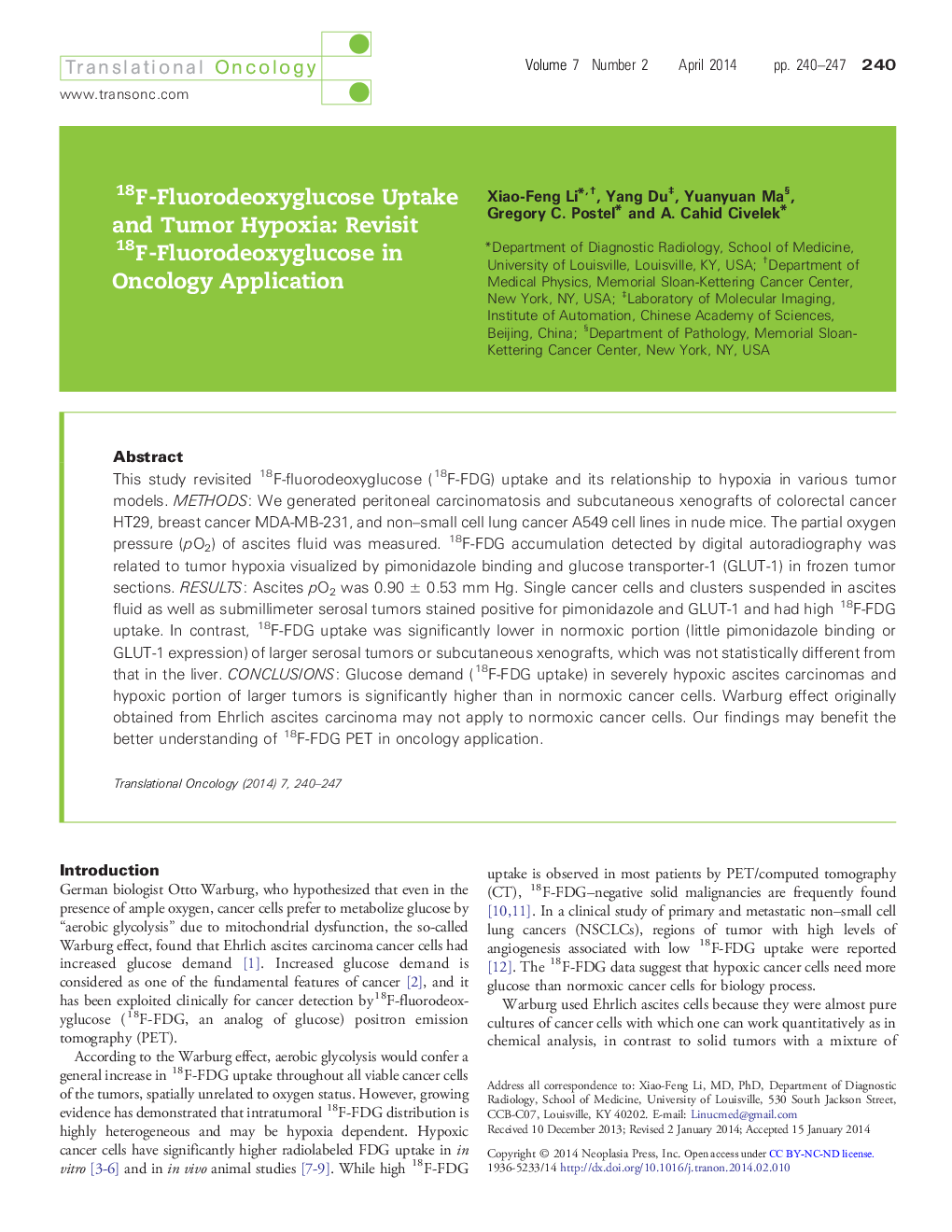| کد مقاله | کد نشریه | سال انتشار | مقاله انگلیسی | نسخه تمام متن |
|---|---|---|---|---|
| 2163550 | 1091433 | 2014 | 8 صفحه PDF | دانلود رایگان |

This study revisited 18F-fluorodeoxyglucose (18F-FDG) uptake and its relationship to hypoxia in various tumor models. METHODS: We generated peritoneal carcinomatosis and subcutaneous xenografts of colorectal cancer HT29, breast cancer MDA-MB-231, and non–small cell lung cancer A549 cell lines in nude mice. The partial oxygen pressure (pO2) of ascites fluid was measured. 18F-FDG accumulation detected by digital autoradiography was related to tumor hypoxia visualized by pimonidazole binding and glucose transporter-1 (GLUT-1) in frozen tumor sections. RESULTS: Ascites pO2 was 0.90 ± 0.53 mm Hg. Single cancer cells and clusters suspended in ascites fluid as well as submillimeter serosal tumors stained positive for pimonidazole and GLUT-1 and had high 18F-FDG uptake. In contrast, 18F-FDG uptake was significantly lower in normoxic portion (little pimonidazole binding or GLUT-1 expression) of larger serosal tumors or subcutaneous xenografts, which was not statistically different from that in the liver. CONCLUSIONS: Glucose demand (18F-FDG uptake) in severely hypoxic ascites carcinomas and hypoxic portion of larger tumors is significantly higher than in normoxic cancer cells. Warburg effect originally obtained from Ehrlich ascites carcinoma may not apply to normoxic cancer cells. Our findings may benefit the better understanding of 18F-FDG PET in oncology application.
Journal: Translational Oncology - Volume 7, Issue 2, April 2014, Pages 240–247